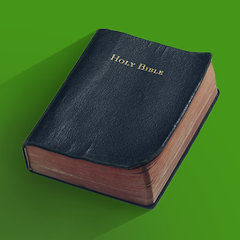Oneness Apostolics argue that because the Son is sitting on His Father’s throne, He must therefore be His own Father since throne’s only have one seat. This is a blatant contradiction of Jesus’ own words concerning His identity.
Jesus said that He and the Father are two (John 8:17-18). Jesus said that He did not send Himself but that it was the Father who sent Him (John 7:28), which would make Him a liar if He is His own Father and did send Himself. Jesus left the Father to come into the world and be born of a virgin (John 16:28). After resurrecting, He went back to be with the Father in heaven (John 13:1; 16:28). There are many other verses proving Jesus is not His own Father but this is sufficient for now.
The scriptures speak about Jesus sitting on His Father’s throne (Revelation 3:21), sitting on the right hand of His Father’s throne (Hebrews 8:1; 12:2), and standing at the right hand of His Father’s throne (Acts 7:55-56). It also speaks of Him sitting on the throne of David (Luke 1:31; Acts 2:30). The throne He sits on is called “His throne” (Matthew 25:31).
It is an outrageous conclusion to force 21st century western concepts upon a biblical document which comes from the east. When looking at how Jesus used the term “throne,” we get a clearer picture of how this terminology is being used.
In Revelation 3:21, Jesus is pictured as sitting on His Father’s throne (which would demand at least two seats). When thinking about how many “seats” would be on this throne, Jesus pictures a “seat” for as many as would overcome the beast. The book mentions 144,000, a number symbolic for “a great multitude which no one could count” (Revelation 7:4, 9). If one throne only has one seat, then how are more than 144,000 pictured as sitting there?
The concept of a “throne” indicates authority. If two are sharing one throne, it’s not implying that two share the same literal seat in a geographical location. It’s implying that two share the same authority. Jesus had power over the nations (Revelation 12:5) which is what was promised to those who overcame the beast (Revelation 2:26). The sharing of “the throne” indicated a joint-participation in authority.
Those who say two sitting on the same throne demands the two individuals to be the same person will be forced to admit Revelation 3:21 pictures a multitude of individuals sharing the same throne while remaining separate individuals.
It might be helpful to show that once the resurrection takes place, the Son will change roles and become subject to the Father (1 Corinthians 15:27-28). 1 Corinthians 15:27-28 would make no sense whatsoever if only one individual is under consideration. We’d have an individual giving his own authority to himself and then later giving his delegated authority back to himself.
Revelation 3:21 is the scripture bringing fatality to the doctrine which teaches “one throne means one seat.”
